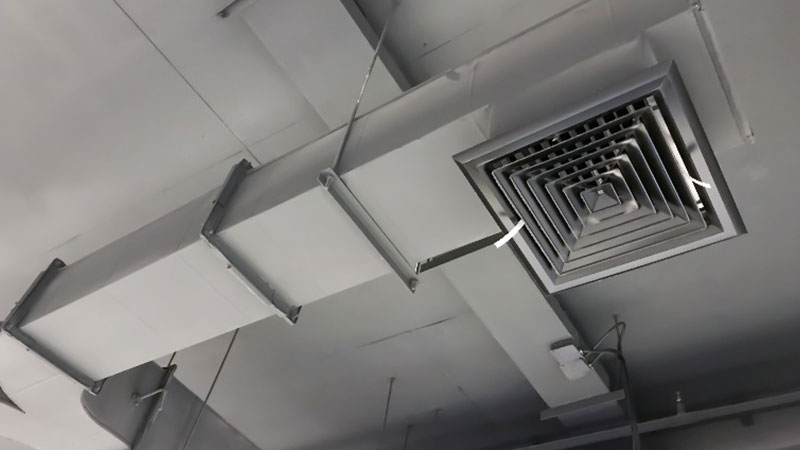When it comes to ensuring comfort in the houses and workplaces, understanding HVAC systems is essential. HVAC, an abbreviation for heating, ventilation, and air conditioning, has a vital role in maintaining indoor air quality and temperature control. As utility costs climb, understanding how these systems work and their efficiency ratings can assist homeowners and business owners make informed decisions that bring about both ease and financial benefits.
One of the important components to comprehend when selecting or caring for an HVAC system is the importance of efficiency ratings. Two important metrics in this context are SEER, or Seasonal Energy Efficiency Ratio, and AFUE, or Annual Fuel Utilization Efficiency. These ratings give clarity into how effectively an HVAC unit performs and can impact everything from installation costs to monthly energy bills. In this article, we will examine the interpretations of SEER and AFUE, clarifying how they affect the efficiency of heating and cooling systems and providing guidance on selecting the right system for your requirements.
The Way HVAC Systems Work
HVAC systems, also known as heating, ventilation, and air conditioning, are designed to control the climate of both residential and commercial spaces. These systems operate on the essential principle of heat transfer, using various components to either warm or cool the air. The two main purposes—heating and cooling—are realized through different processes. Heating is typically done via heaters, heat pumps, or boilers, while cooling is attained through air conditioning units or chillers. Understanding how these components function in unison is crucial to maintaining a pleasant indoor environment.
Air circulates through the HVAC system via a grid of ducts, which deliver treated air across the building. When heating is required, the system intakes cooler air, warms it, and pushes it back out via the ducts. In opposition, during warmer months, the air conditioning component cools the air by passing it over refrigerant coils. This process not only lowers the temperature but also removes humidity from the air, enhancing comfort levels. Proper airflow and ductwork are essential for maximizing efficiency in both cooling modes.
In addition, ventilation plays a significant role in maintaining indoor air quality. HVAC systems are equipped with filters that trap dust, allergens, and other pollutants, ensuring that the air circulated in your home or business is healthy and healthy. Regular maintenance, including changing filters and system inspections, can help deter common issues that may impact the performance of the HVAC system. By understanding how each part operates and works together, homeowners can make informed decisions about their heating and cooling needs.
HVAC Maintenance Tips
Regular servicing of your heating, ventilation, and air conditioning system is essential to ensure it operates smoothly and efficiently. One of the simplest yet most important tasks is replacing air filters. Obstructed filters hinder airflow, making your system function harder and likely leading to higher energy bills and early wear. It is suggested to inspect filters on a monthly basis and replace them every 1 to 3 months, depending on usage and the sort of filter.

Another important maintenance task is scheduling annual professional evaluations and tune-ups. A skilled technician can spot potential issues before they become significant problems, ensuring your system runs smoothly. During these inspections, the technician can service the components, monitor refrigerant levels, and examine ducts for leaks. This proactive approach not only enhances efficiency but also prolongs the life of your HVAC system.
Lastly, don’t overlook the outdoor unit of your HVAC system. Maintaining the area around the outdoor condenser uncluttered of clutter, leaves, and grass can help ensure proper airflow and cooling efficiency. Additionally, ensuring that the coils are clean and not twisted can further enhance performance. Regularly inspecting these areas and taking the appropriate steps to keep them in excellent condition will help your HVAC system function effectively throughout the year.
Choosing the Proper HVAC Unit
Selecting the right HVAC solution for your house requires considering several critical elements, including the size of your space, your budget, and your energy requirements. Initially, evaluate the square footage of your residence and your specific heating and cooling requirements. A professional HVAC technician can perform a load calculation to determine the appropriate system capacity, ensuring efficient performance and comfort. Investing in the right size system will help avoid issues such as inadequate heating or cooling and unnecessary energy consumption.
Next, take into account the energy efficiency ratings of various HVAC units. Look for linked here with high Seasonal Energy Efficiency Ratio (SEER) for cooling and Annual Fuel Utilization Efficiency (AFUE) for heating. These ratings demonstrate how efficiently the systems operate, which can lead to reduced energy bills over time. Additionally, think about the type of system that best suits your lifestyle. Options include traditional central air and heating units, ductless mini-split units, or even smart solar-powered HVAC systems, each with distinct benefits.
Finally, think about the long-term maintenance factors and possible upgrades for your selected system. Regular maintenance is crucial for keeping your HVAC unit running optimally, so think about how accessible service options are in your area. Additionally, look for features that allow for future innovations, such as smart thermostats or compatibility with energy-efficient technologies. By taking these factors into account, you can reach an informed choice that enhances your home's comfort and energy efficiency.
